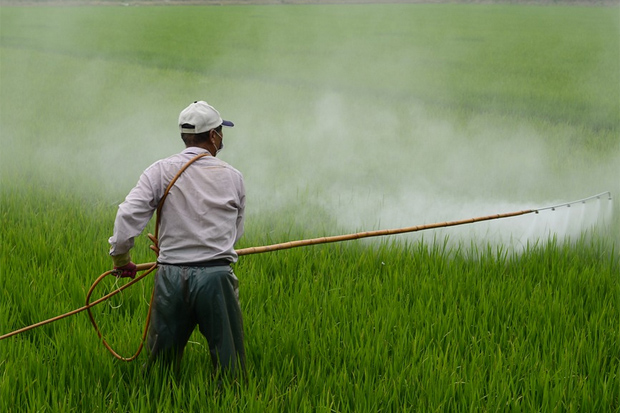
Are pesticides and fertilizers changing agriculture

In recent decades, the agricultural sector has witnessed a significant transformation, largely propelled by the introduction of pesticides and fertilizers. These agricultural chemicals are designed to enhance crop production and protect yields from pests and diseases. As farmers increasingly adopt these practices, questions arise about the impact they have on the environment, human health, and the sustainability of farming systems. This article delves into how pesticides and herbicides are changing agriculture, examining their role, effectiveness, and consequences while also exploring alternative approaches.
Understanding the pesticides vs herbicides debate is crucial for grasping the nuances of modern agriculture. Pesticides encompass a wide range of substances, including insecticides, fungicides, and herbicides, each with specific purposes in crop management. By analyzing the complexities of these chemicals, we can better navigate the challenges faced by farmers and cultivate a more sustainable agricultural future. Through this exploration, we aim to shed light on the necessity of balancing productivity with environmental health and human safety.
- The Role of Pesticides in Modern Agriculture
- Impacts of Pesticides on Crop Yield and Quality
- The Dual Nature of Fertilizers: Benefits and Risks
- Environmental Consequences of Pesticide and Fertilizer Use
- The Growing Concern for Human Health
- Alternatives to Conventional Pesticide and Fertilizer Use
- The Future of Agriculture: Sustainable Practices
- Conclusion: Balancing Productivity and Environmental Health
The Role of Pesticides in Modern Agriculture
Pesticides play an essential role in enhancing agricultural productivity. Farmers use these chemicals to protect crops from pests, diseases, and weeds, which can drastically reduce yields if left unchecked. The introduction of pesticides has allowed for more expansive farming operations and has contributed to food security in many regions around the globe. Without the ability to combat various agricultural threats, farmers would face greater challenges in producing enough food to meet growing populations.
Types of Pesticides and Their Persistence
The persistence of pesticides varies significantly, ranging from moderately persistent (lifetimes of one to 18 months, like 2,4-D and atrazine) to highly persistent (up to 20 years, such as DDT and aldrin) and even permanent (like lead, mercury, and arsenic). Although less persistent pesticides may seem preferable, those that degrade quickly, like organophosphate insecticides, are often highly toxic and nonselective, promoting resistance in pests and harming beneficial organisms. The transportation of these chemicals typically occurs through the air during application, but reliable data on their movement and behavior in the atmosphere is scarce due to inadequate monitoring.
Factors such as their chemical makeup, application method, and environmental conditions affect their concentration and fate, with pesticides able to travel long distances on dust particles before eventually returning to the earth. This complex behavior poses challenges for environmental scientists and agriculture policymakers, who must monitor and regulate the use of these chemicals to minimize adverse impacts.
Impacts of Pesticides on Crop Yield and Quality
While the primary goal of using pesticides and herbicides is to safeguard crop yields, there are significant ongoing debates concerning their actual impacts on the quality of produce. Numerous studies suggest that when applied correctly, pesticides can lead to enhanced crop yield and quality by preventing diseases and controlling pest populations. However, over-reliance on these chemicals can result in diminishing returns, as pests can develop resistance to certain pesticides, leading to the need for stronger, oftentimes more toxic alternatives.
Additionally, there is growing evidence indicating that excessive application of pesticides can have detrimental effects on soil health and biodiversity, ultimately compromising the agricultural ecosystem's resilience. This shift has stirred a sense of urgency among agronomists and farmers alike to find a balance between effective pest management and sustainable farming practices.
The Dual Nature of Fertilizers: Benefits and Risks
Fertilizers are another crucial component of modern agriculture, delivering essential nutrients to crops to ensure optimal growth. There is a fine line between the benefits and risks associated with fertilizer use. On the one hand, fertilizers can significantly enhance soil fertility and crop production, resulting in substantial increases in agricultural output. However, excessive use can lead to nutrient runoff, which contributes to water pollution and environmental degradation.
The challenge lies in optimizing fertilizer application to meet crop needs while minimizing negative environmental impacts. Integrated nutrient management strategies and innovative fertilization methods are becoming increasingly important in achieving this balance. Agricultural practices that emphasize soil health, such as cover cropping and reduced tillage, can promote efficient nutrient use and enhance the resilience of farming systems against pests and diseases.
Environmental Consequences of Pesticide and Fertilizer Use
The environmental effects of using pesticides and fertilizers cannot be ignored, as they pose significant risks to ecosystems and wildlife. Chemicals from these products can leach into surrounding soil and waters, leading to contamination of waterways and harming aquatic life. Additionally, non-target organisms, which include beneficial insects and pollinators, can suffer from exposure to these chemicals, disrupting entire ecosystems.
Furthermore, pesticide residues can remain in the soil long after application, leading to bioaccumulation in the food chain. The long-term effects of this accumulation may have unforeseen consequences on wildlife populations and biodiversity. Comprehensive studies are necessary to fully understand the extent of these environmental impacts to inform policymakers and regulators about best practices in agricultural chemical use.
The Growing Concern for Human Health
The use of pesticides and herbicides has also raised concerns regarding public health, as exposure to these chemicals can occur through various pathways, including food consumption and occupational exposure for farmers. Numerous studies have linked certain pesticides to health issues such as respiratory problems, neurological disorders, and increased cancer risk. As awareness of these potential health risks continues to grow, consumers are becoming more conscious of the pesticide usage in their food supply.
To mitigate these risks, regulations surrounding pesticide use have become more stringent, emphasizing the importance of safety measures for farmers and workers. Organic farming practices, which avoid the use of synthetic pesticides and fertilizers, are gaining traction as consumers seek healthier, environmentally friendly options. Nevertheless, the challenge remains to maintain agricultural productivity while safeguarding human health.
Alternatives to Conventional Pesticide and Fertilizer Use
As the detrimental impacts of conventional pesticides and herbicides on both the environment and human health are better understood, a growing movement toward alternative agricultural practices is emerging. Integrated Pest Management (IPM) is one such approach that combines various techniques to control pests while minimizing the use of chemical inputs. IPM emphasizes understanding pest life cycles and utilizing biological control agents, cultural practices, and habitat manipulation to achieve appropriate pest management.
Similarly, organic farming methods prioritize the use of natural fertilizers and pest control measures, reducing reliance on synthetic chemicals. These practices not only protect the environment but also enhance soil health and promote biodiversity. Agroecological practices, which focus on system diversity and resilience, are vital for developing sustainable farming systems that can withstand the challenges of climate change and resource scarcity.
The Future of Agriculture: Sustainable Practices
The future of agriculture is poised for transformation, as sustainability becomes an increasingly pressing global concern. Innovative approaches to farming that prioritize ecological health, social equity, and economic viability are gaining momentum. Strategies such as agroforestry, precision agriculture, and regenerative practices seek to minimize the negative impacts previously associated with conventional pesticides and fertilizers.
Collaboration among farmers, researchers, and policymakers is essential to develop and promote sustainable practices that benefit ecosystems and food systems alike. Education and awareness campaigns can empower farmers to adopt practices that enhance productivity without compromising environmental health, ensuring that agriculture continues to meet the demands of growing populations.
Conclusion: Balancing Productivity and Environmental Health
Ultimately, the evolution of agriculture stemming from the use of pesticides and herbicides presents both opportunities and challenges. While these chemicals have undeniably contributed to increased agricultural productivity and food security, their widespread application raises concerns regarding environmental degradation and human health. The key lies in finding a sustainable balance that allows for continued agricultural innovation without sacrificing the integrity of the environments on which we depend.
By embracing integrated pest management, organic farming, and alternative agricultural practices, we can navigate the complex landscape of modern farming. As we move forward, ensuring the future of agriculture requires collaboration, commitment, and creativity in addressing the persistent questions surrounding pesticides vs herbicides and their implications for our planet and people.
Did you find this article helpful? Are pesticides and fertilizers changing agriculture See more here Education.
Leave a Reply






Related posts